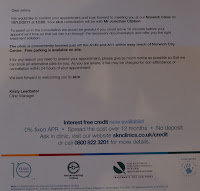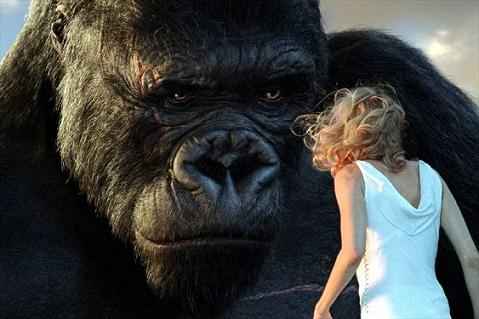Now I have thought of all my characters and they have agreed to be featured in my Documentary and completed my Location Research, I have written a drafted script. As I am interviewing people I have not included their reponses as I cannot predict what they're going to say. I have however, written questions that I am going to ask them which is useful as I have prepared them well in advance.
My script is not set in stone and it may change depending on the circumstances on the day of filming. I most likely will not edit my film in the exact order the characters appear in the script either. Nevertheless, when I film my interviewees I can take a copy of the script with me each time so I know what I want to ask them.
Nowadays we’re bombarded with thousands of images of perfectly airbrushed models. Within the UK a massive(x) magazines are issued monthly, with majority picturing people who are conventionally good looking, who not appear to have any flaws with their appearance. The truth is, this is completely untrue, everybody has issues with the way they look. Nobody has perfectly smooth skin, a totally symmetrical face, or a body shape that is 100% defined and toned. The media has started to create an unrealistic ideal for the average person to attempt to conform to. This means, plastic surgery is on the increase, people are becoming increasingly worried about the way they look and eating disorders such as anorexia are becoming more common, particularly in young girls.
My aim in this documentary is to discover whether the media really are to blame for people doubting the way they look, why surgery is becoming more popular and if it really is necessary for us to be critical of our own appearances well as others.
EXTERIOR SHOT: OUTSIDE ALICES HOUSE
First of all, I’m off to meet Alice. Alice is 18 and has suffered from anorexia. I was first introduced to Alice last year when she was suffering from the disease. I noticed she was incredibly thin but because I’d never know her any differently, assumed that was her natural build. After she was diagnosed and began increasing in weight I realised just how thin she was and now she is at a healthy weight I can see just what a dangerous weight she got to. Now she looks really healthy and definitely seems a lot happier with in herself. I hope to find out whether seeing images of extremely slender models contributed to Alice feeling as though she needed to lose weight.
RINGS DOORBELL
ALICE OPENS DOOR
ALICE: Hello
JENNA: Hello
DOOR CLOSES SHUT
JENNA AND ALICE SEATED IN ROOM WHERE INTERVIEW WILL COMMENSE
JENNA: First of all you’re looking really well and healthy, so congratulations for getting as far as you have.
ALICE:
JENNA: Obviously you’ve been on a long journey to get to where you are today, how old were you when you started feeling as though you needed to lose weight?
ALICE:
JENNA: Do you remember what triggered you into thinking that you need to be thinner?
ALICE:
JENNA: In your opinion do you think the media are to blame in any way for sudden decrease in weight?
ALICE:
JENNA: Do you feel the media have a certain amount of responsibility not to use models that are too thin and to use people that are a healthy weight?
ALICE:
JENNA: Do you think using models that are a healthy weight will prevent people from being diagnosed with eating disorders?
ALICE:
JENNA: Do you feel society in general is becoming more obsessed with people’s appearances?
ALICE:
JENNA: Well thank you for telling us your story Alice and we’re really glad that you’re back to being healthy and much happier.
EXTERIOR SHOT: OUTSIDE ALICES HOME
JENNA: It was really intriguing to hear Alice’s story, from what she said it seems….
NEW DAY#
EXTERIOR SHOT: OUTSIDE CLINIC
JENNA: Having met Alice and learnt about her story, I want to meet someone whose profession is to improve people’s body image and self-esteem. So I’ve arrived here at (x) clinic which specialises in lazar treatment for those that want to remove any excess hair on their bodies. My mum has had treatment here for a couple of years now so I’m hoping to talk to the lady that is responsible for her treatment, Victoria. The clinic also has a plastic surgeon consultant Mr(x). He is the same consultant who I spoke to before I had my ears pinned back and I want to discuss with him today the possibility of me having my nose done when I turn 18 next year, but I also want to find out why he thinks plastic surgery figures are higher than ever.
INTERIOR SHOT: INSIDE CLINIC
SHAKES HANDS WITH VICTORIA
ENTERS TREATMENT ROOM 1
FOOTAGE SHOWN OF MY MUM HAVING TREATMENT
JENNA: How long have you been conducting lazar treatment on patients?
VICTORIA:
JENNA: Do you see a difference in patients once they’ve started having treatment?
VICTORIA:
JENNA: What do you think makes patients come to the clinic?
VICTORIA:
JENNA: Do you think cosmetic procedures are necessary?
VICTORIA:
JENNA: Would you ever have any treatments done yourself?
VICTORIA:
JENNA: Do you think the media and advertisement influence how people feel about their appearance?
ENTERS TREATMENT ROOM 2
CONSULTANT: Hi Jenna, come in and take a seat.
SITS DOWN
CONSTUTANT: What can I do for you today?
JENNA: I have always hated my nose and wanted to change it so I would like to discuss with you the options of what I could have done
CONSTULTANT:
JENNA: Could you give me an idea roughly of how much the operation is likely to cost?
CONSTULTANT:
JENNA: Do you find plastic surgery is on the increase?
CONSTULTANT:
JENNA: What do you think contributes to people wanting to have plastic surgery, do you think the media are partially to blame?
CONSTULTANT:
JENNA: What age would you say is most popular for people having cosmetic procedures?
CONSTULTANT:
JENNA:
CONSTULTANT:
SHAKES HAND WITH THE CONSTULTANT AND EXISTS THE ROOM
JENNA:
NEW DAY#
IN THE KITCHEN MAKING A CUP OF TEA
JENNA: Today I am going to drive over to my nans. She’s now 74 and I really want to find out what people’s opinions were on appearance when she was growing up. Our society was really different when she was younger and magazines weren’t readily available for people to buy. This might help indicate whether or not the media play a contribution in to how we feel about ourselves.
IN THE CAR
JENNA: I’m quite excited to speak to my nan about this today. Obviously she knows I’ve had plastic surgery in the past and she’s always supported my decision to change the way I look, but I’m not sure whether this is because I’m her granddaughter and she’ll support me in whatever I decide to do, or if she actually feels that plastic surgery is acceptable.
RINGS DOOR BELL
DOOR OPENS
GREETS NANA
SEATED IN THE CONVERSATORY
JENNA: Were people worried about what they looked like when you were younger?
NANA:
JENNA: As you didn’t always have a television do you think the introduction of tv has influenced the way people feel about how they look?
NANA:
JENNA: What sort of clothes did people wear when you were growing up?
NANA:
JENNA: Do you think now clothing has become more provocative our society is becoming more and more superficial?
NANA:
JENNA: What’s the main thing you think is different about society nowadays compared to when you were growing up?
NANA:
JENNA: Do you agree with people having plastic surgery or do you think they should just accept the way they are?
NANA:
JENNA: Do you think people used to be judged much more on their personality back then?
NANA:
SAYS GOODBYE TO NANA AND GETS BACK INTO THE CAR
JENNA: From what she said, things used to be very different. Obviously it’s an advantage growing up in the era that I am in as we have far more commodities than they did years ago, but from what she said, our society has become so false nowadays. Nobody seemed to be worried or interested about someone’s appearance, if they liked the person that was all that mattered. I’m not speaking for everyone, but in general terms it seems nowadays if someone’s considered to be good looking then they’re automatically well liked. Whereas someone could be the nicest person but if they’re not considered very good looking then they aren’t very liked by piers.






















